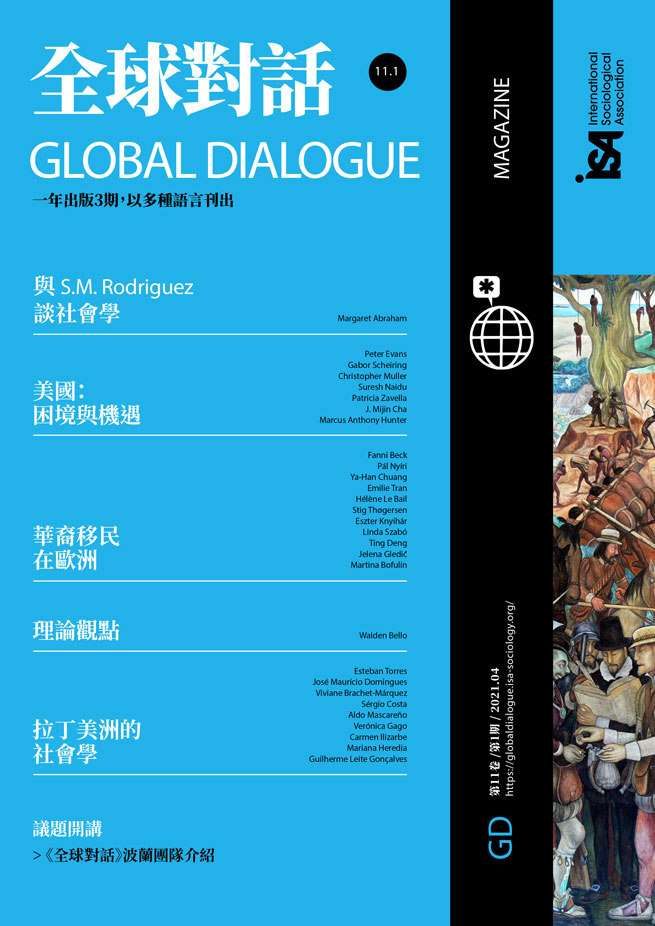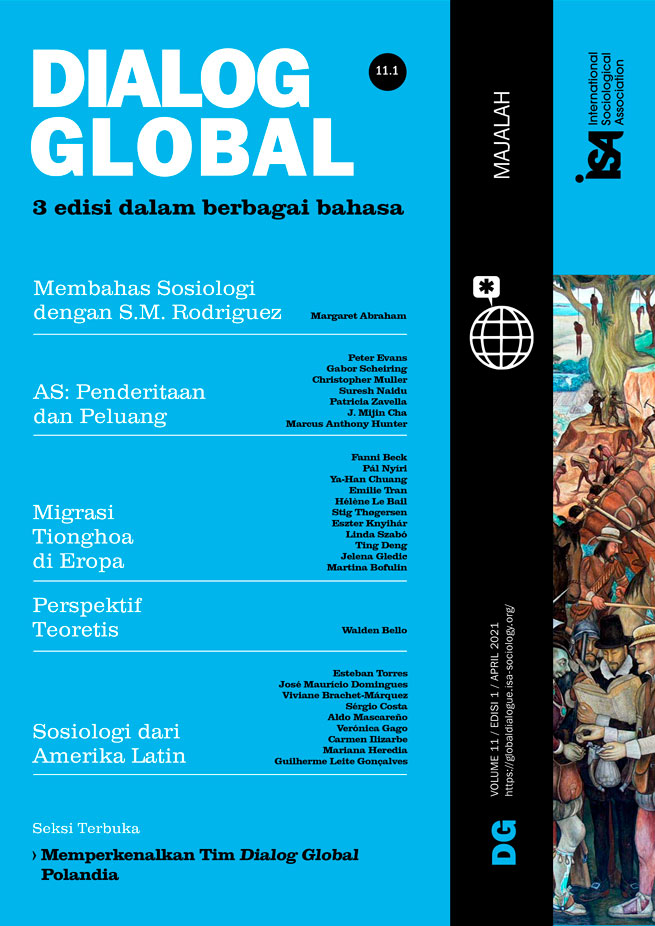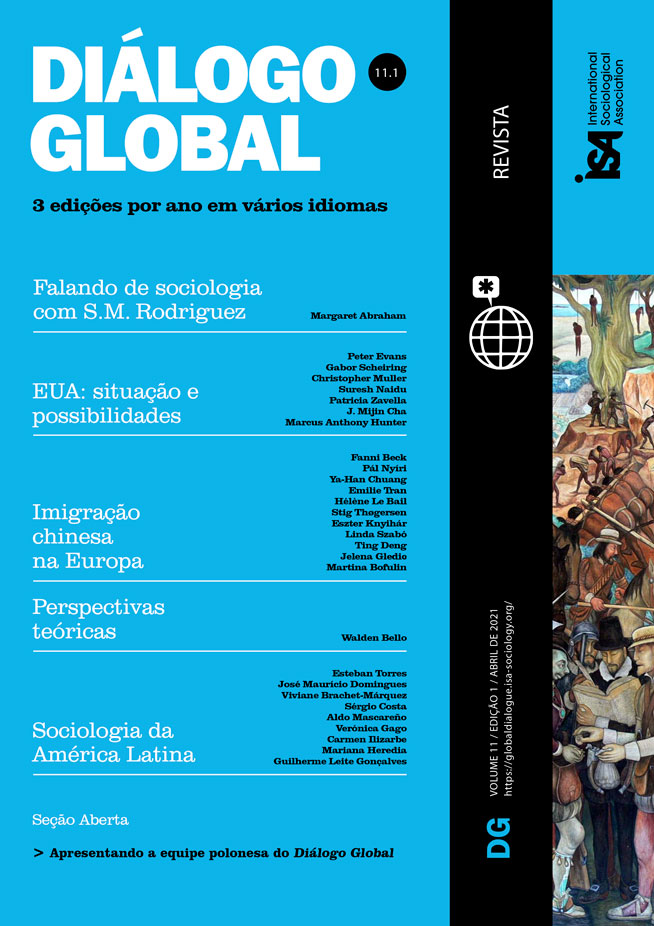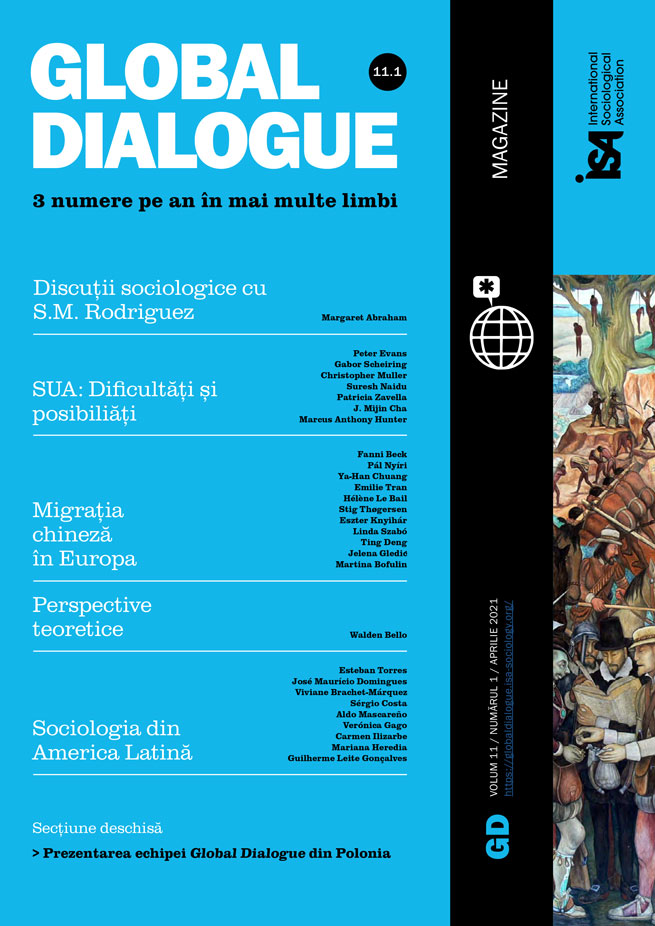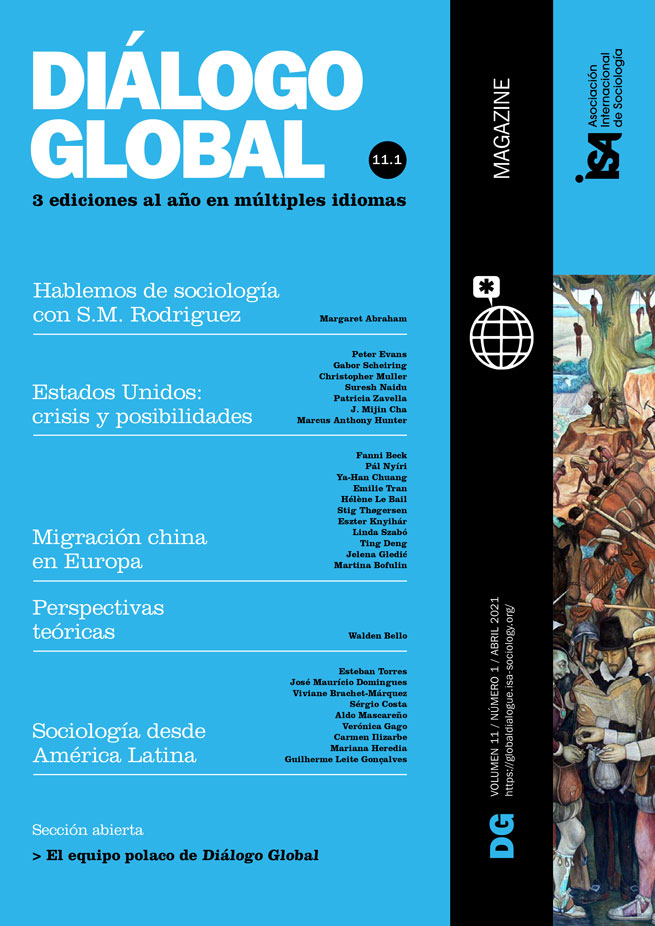Since the mid-twentieth century, the trajectory of the United States has been emblematic of the global evolution of capitalism. Is the US still a harbinger of capitalism’s global evolution? If so, the failing ability of 21st-century US capitalism to sustain twentieth-century standards of well-being for its working classes, and the political ramifications of this failure, has implications for all citizens of the world.
Deciphering the origins and implications of the US’s chaotic entry into the 21st-century is an analytical challenge. Five impressive efforts to take up this challenge follow. They are concise analyses, focused on specific arenas of the US political economy, probing the question of what might be done about the disturbing dysfunction of the US. While this ensemble makes no pretense of being a comprehensive overview, it is an insightful and provocative mosaic that offers a productive start on the debates that are likely to consume those who must live in (or in the shadow of) the United States as a new decade begins.
Gabor Scheiring starts our discussion with a newly recognized indicator of declining US wellbeing – the increased mortality rates resulting from “deaths of despair” among white workers without college credentials. The market-powered destruction of working-class livelihoods and communities that drives deaths of despair has diverted working-class political grievances into support for exclusionary right-populist politics.
Deaths of despair are also a telling symptom for Christopher Muller and Suresh Naidu, but Muller and Naidu’s diagnosis highlights “the social divisions produced by credential-based exclusion and exploitation” and the political gulf that follows from this exclusion. Expanding access to the college credential by substantially lowering costs may help to bridge the divide, but they see constructing effective alliances across the credential gulf as even more important. The Muller/Naidu analysis places the onus for alliance building on the educated Left, suggesting, for example, that more members of this privileged group should put their credentials at the service of “organizations that actually are accountable to working-class Americans,” such as labor unions.
Pat Zavella’s article moves from the destruction of working-class lifeworlds to the persistent struggles of poor and immigrant women of color. In contrast to Scheiring’s argument in which the state is primarily an accomplice to the destructive agenda of neoliberal capitalism, the state’s active repression of reproductive rights is a core threat to these women’s lives and families. Yet, having the state, rather than impersonal capital, as the principal antagonist, may be conducive to organizing resistance. For Zavella, the essence of the fight for reproductive justice lies in the broad coalition of social movements, led by women of color, which won some surprising victories while resisting the conservative agenda and will be no less aggressive in confronting the Biden administration.
The transition to a low-carbon future is often treated as a technocratic problem, but Mijin Cha’s article makes it clear that inclusive organizing, bringing together working-class organizations and communities of color, is again the key to success. The struggle for climate justice requires coalition building that “inextricably links quality job creation with emissions reduction” and includes communities of color that have been forced to bear the brunt of polluting fossil fuel emissions. Strategies that “silo economic and social considerations away from emissions reduction” are not only unjust but will never build political coalitions broad enough to gain traction against fossil fuel profits.
The last of the five articles, by Marcus Hunter, combines profound historical depth with a comprehensive vision of the path toward a solution. Starting from the foundational role of slavery in the formation and sustenance of US capitalism he underscores the magnitude of the transformation required to correct the racist social, cultural and economic inequities ingrained in 400 years of racial capitalism. The multidimensional program of reparations that Hunter advocates is not, however, simply a theoretical formulation. It begins with very concrete and specific proposals, such as legislation to create national Truth, Racial Healing, and Transformation (TRHT) Commissions.
Strikingly diverse in substantive focus and analytic perspective, these five articles do possess common themes, both in terms of their diagnoses of what ails the US and in their identification of ways to move forward.
The destructive effects of Trump’s policies are taken as given for these analysts. The January 2021 storming of the Capitol demonstrated Trump’s ability to catalyze white working-class anger but also dramatically revealed the political cauldron that has been created by US dysfunctions. Written well before the January storming, Scheiring’s article argued that, absent reversal of the havoc wreaked on working-class lives by the decades-long neoliberalization, Trumpism was likely to be a prelude to similar but even more toxic political movements.
Neither COVID vaccinations nor a new president will resolve the problems raised here. The structural roots of 21st-century US dysfunctions are the principal target of the strategies proposed by these authors, and these will persist in spite of having a new national administration in Washington. Zavella concludes that having Biden in the White House doesn’t change the fact that “The future is one of struggle.” Cha is convinced that the “prospects for a Green New Deal-type mobilization under a Biden-Harris Administration seem dim.”
Those anxious about the future of the United States will not finish this ensemble relieved. None of these authors argue that there are ineluctable structural reasons why the solutions they propose are likely to be adopted. None of them claim that powerful political forces are converging to counter the decline of the US economy and polity. There are no reassuring threads of an optimistic teleology to be grasped by those seeking reassurance.
Yet, there are no prophets of doom here either. These analyses are not just diagnostic. They envisage an intriguing set of possibilities for promoting change. Hunter, who is focused on the deepest structural problem of the US – racism – also offers the most optimistic vision, arguing that “acknowledging and archiving the truth and achieving meaningful racial healing can unlock a transformed America.” Each article identifies a set of political agents who have the potential to exert leverage on the side of progressive change. Considering national politics an unpromising arena, they focus on concrete possibilities on a smaller scale. Cha cites successful climate justice coalitions at the state level, especially where coalitions include working-class organizations. Zavella focuses directly on coalitions across gender, race and class identities as the essential core of progressive energy. For Muller and Naidu, the willingness of the educated Left to help build and sustain working-class organizations is the key. Scheiring affirms that even sociologists have a role to play by mapping “the complex causal pathways that link economic dislocation to the deaths of despair” and the mechanisms that link despair to regressive politics.
Despite focusing on distinctly different arenas, the authors identify sets of actors that overlap in ways that make victories in one arena reinforce possibilities for moving ahead in other arenas. What this assemblage provides then is an intriguing, intersecting set of plans for action. Not a blueprint for what is to be done, but a set of partial sketches of “what might be done.”
Peter Evans, University of California, Berkeley, USA, and member of ISA Research Committees on Economy and Society (RC02), Labour Movements (RC44), and Social Classes and Social Movements (RC47) <pevans@berkeley.edu>








